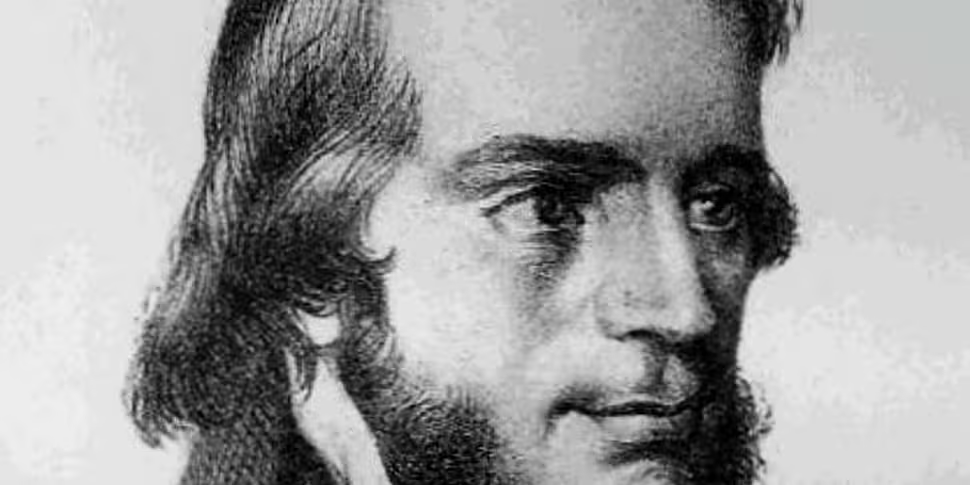After a summer break, ‘Talking History’ returns this Sunday at 7pm. This week’s discussion will be on the Irish nationalist, Thomas Davis. His contributions to Ireland’s tumultuous past stand out as unique and have left an indelible mark on Irish history, both politically and culturally.
The life of Thomas Davis began in Mallow, Co. Cork, on 14 October 1814. His father was James Thomas Davis, a physician of Welsh origin. However, he died around the time of youngest son’s birth. It was then left to Thomas’s mother, born Mary Atkins, to raise the family of four children.
She did so with the aid of her family in Mallow, but with the death of her own mother in 1817, she promptly left for Dublin. It was here that Thomas spent his childhood, first in Warrington Place, before moving to Baggot Street in 1930, which was also the place of his ill-timed death in September 1845, at the age of thirty, due to scarlet fever.
Davis was educated in Trinity College, graduating with a BA in 1936. He then pursued a career in law, moving to London, before being called to the bar in 1938. Despite his protestant faith, Davis was an active opponent of the Act of Union. During his years in university, he was also an active member within the history society. It was these leanings that framed his significant, albeit short lived, contributions to Irish history.

Thomas Davis, Charles Gavan Duffy and John Blake Dillon, founders of 'The Nation'
He co-founded 'The Nation' in October 1842 and it ran as a weekly publication until January 1844. This provided a fresh voice and a new agenda in Irish politics, literature and economics. Charles Gavan Duffy was the editor and was heavily involved in shaping and delivering content, but Davis was the driving force. In the first year alone he published over two hundred essays and editorials, as well as a wide variety of poetry and literature. Davis’s friend from university, John Blake Dillon, was also central to this enterprise.
Having experienced difficulties with the passive and cautious nature of O’Connell’s Repeal Campaign during the 1840’s, Davis and his colleagues began to plough a new furrow, as the future of Ireland’s revolutionary nationalism was shaped and began to move in a more militant direction. This came to a head with the Young Irelander Rebellion of 1848, which followed the deaths of both Davis and O’Connell, who died just one year after his compatriot and rival in 1846, aged 71.
Scene of the 1848 Young Irelander Rebellion of 1848, in Ballingarry, Co. Tipperary
Despite being to the fore in Irish culture during this time, Davis didn’t live to see the burgeoning nationalist movement that followed his untimely death. However, his writings and beliefs appealed to all facets and future incarnations of Irish nationalism.
Today, the cultural significance of Davis is clear to be seen. Not only do his achievements and exploits carry great significance in Irish history, but his legacy lives on in Irish culture too. Known in particular for his various writings, one of his most famous ballads was ‘A Nation Once Again’, first published in ‘The Nation’ in 1844. It has since become one of the most recognisable acclamations of Irish nationalism. It was even quoted by Churchill in his correspondence with de Valera during World War II. Additionally, many GAA club teams carry his name, while a statue of him was erected at College Green, Dublin in 1966.
Join 'Talking History', as Patrick and a panel of experts delve in to the life of Thomas Davis. What are his main contributions to Irish history? What inspired his involvement in Irish Nationalism? And what further impact could he have had but for his death in 1845?









